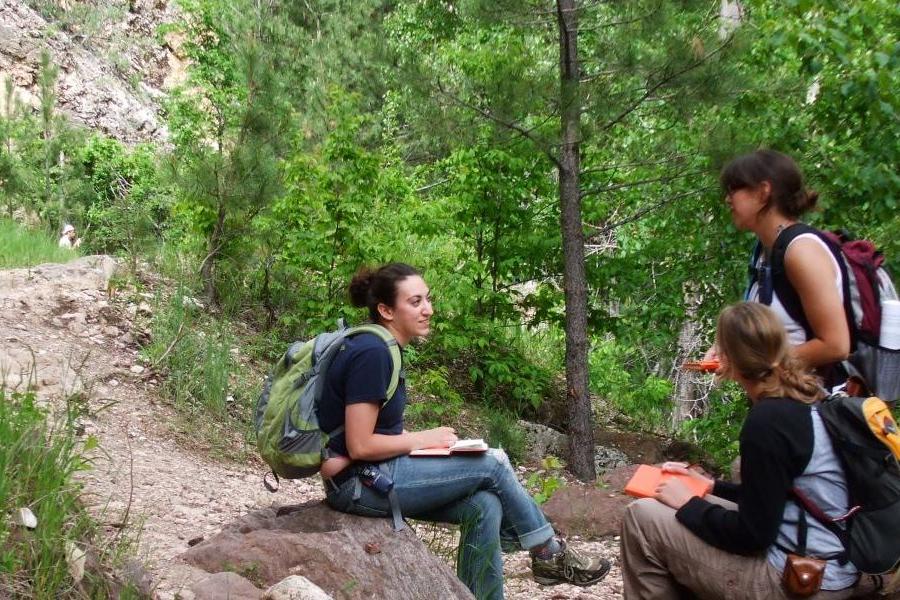Research and Science

žžŔ˛ State Awarded State Grant to Provide Training in Cybersecurity, Manufacturing and Healthcare
Rapids Grant will bolster workforce development with future žžŔ˛ State graduates filling key shortages in industries across Ohio.

Research Update: Studying neutron stars with gravitational waves
Neutron stars are some of the densest objects in the universe, and as such, the conditions at the cores of these extreme objects are impossible to reproduce on Earth. However, we can use data from the Laser Interferometer Gravitational Wave Observatory (LIGO) and the Virgo gravitational wave detector to gain insights into the physics of neutron stars.
Physics professor receives DOE grant to study the quark-gluon plasma
Up until approximately 10^(-5) seconds after the Big Bang, the Universe was is a primordial state of matter called a quark-gluon plasma (QGP). This is due to the fact that the early Universe was extremely hot and in such a hot environment normal matter, e.g., atoms, atomic nuclei, and even neutrons and protons, did not exist.
Physics professor receives NIH grants to study membrane proteins
The National Institutes of Health (NIH) recently awarded a $1.86 million grant to Thorsten-Lars Schmidt, Ph.D., to develop molecular tools that help researchers to understand membrane proteins. As an add-on the NIH awarded Dr. Schmidt an instrumentation grant for a high-end Atomic Force Microscope.
Physics Professor receives R35 Grant from the National Institutes for Health
The National Institutes of Health (NIH) recently awarded a $1.86 million grant to Thorsten-Lars Schmidt, Ph.D., to develop molecular tools that help researchers to understand membrane proteins. As an add-on the NIH awarded Dr. Schmidt an instrumentation grant for a high-end Atomic Force Microscope.

STEM Professors Receive NSF ADVANCE Grant to Explore Impact of Gender and Other Factors on Workload of STEM Faculty
“Who is Counted and What Counts: Tracking Women’s Engagement in Low-Prestige/High-Workload Service Activities at žžŔ˛â€ť will examine whether faculty members with underrepresented and/or historically excluded intersecting gender and racial/ethnic identities (IGREs) perform more high-workload, low-prestige service work than their faculty peers.
Hegmann Group Leads International Collaboration and Publishes Work on Chirality Transfer in Science Advances
Congratulations to Torsten Hegmann, Ph.D., and his research group for leading an international collaboration and publishing their work in Science Advances! Their article, titled “Effects of shape and solute-solvent compatibility on the efficacy of chirality transfer: Nanoshapes in nematics” was featured on the Science Advances website.

Geography Professor Selected for AGU’s National Diversity, Equity and Inclusion Leadership Academy
Scott Sheridan, Ph.D., professor and chair of the Department of Geography, in the College of Arts and Sciences at žžŔ˛, was recently selected to become an inaugural American Geophysical Union (AGU) LANDInG (Leadership Academy and Network for Diversity and Inclusion in the Geosciences) Academy Fellow.

New Collaboration to Provide Real-Time Data Exchanges for Astrophysicists
What happens when two neutron stars collide? What extreme densities and temperatures are reached? What new states of matter exist within the core of a neutron star? One žžŔ˛ State College of Arts and Sciences theoretical astrophysicist, Veronica Dexheimer, associate professor in the Department of Physics, is diving headfirst into these questions as a co-principal investigator collaborating with her peers at multiple institutions on a recently funded cyberinfrastucture research grant project.
